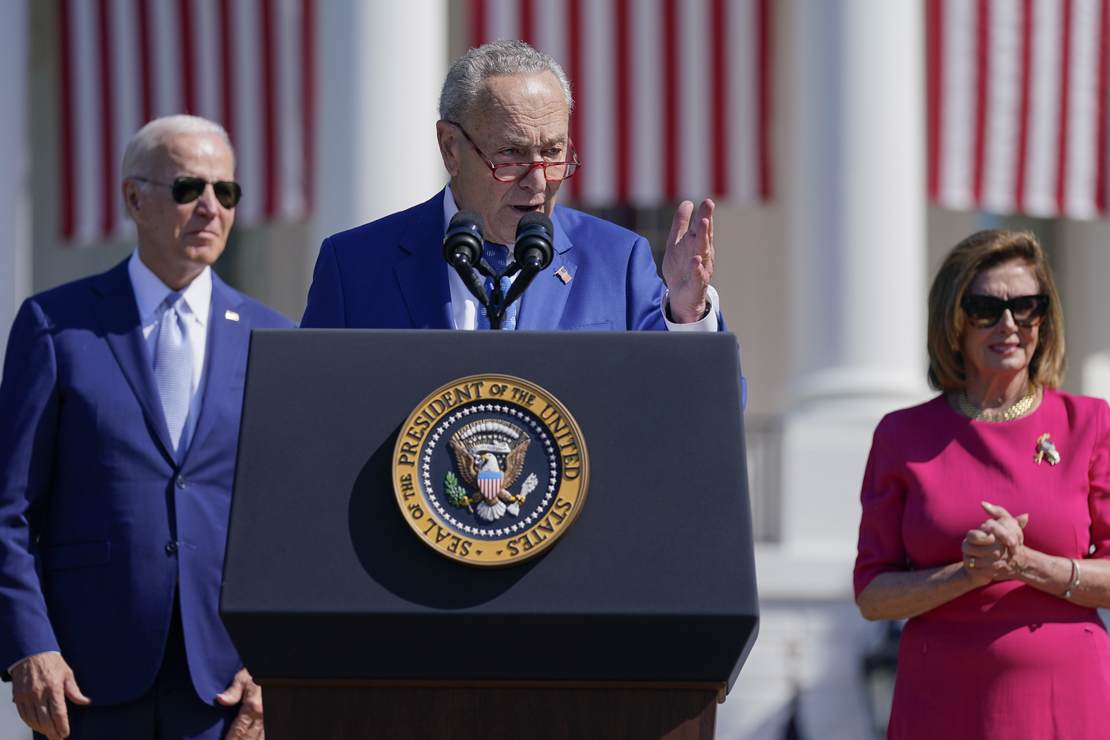
And uncomfortably high interest rates, too. CNBC’s team called the Federal Reserve’s July minutes “confusing” after their release late yesterday, but the overall message looks clear enough. The Fed still sees inflation as the greatest threat to the economy, and it doesn’t see any signs of significant denting in inflation yet — not from policy, and not from its previous rate hikes:
[embedded content]
Jeff Cox broke it down further, finding a bit more firmness than Steve Liesman and Andrew Ross Sorkin did:
Federal Reserve officials at their July meeting indicated they likely would not consider pulling back on interest rate hikes until inflation came down substantially, according to minutes from the session released Wednesday.
During a meeting in which the central bank approved a 0.75 percentage point rate hike, policymakers expressed resolve to bring down inflation that is running well above the Fed’s desired 2% level. …
Meeting participants noted that the 2.25%-2.50% range for the federal funds rate was around the “neutral” level that is neither supportive nor restrictive on activity. Some officials said a restrictive stance likely will be appropriate, indicating more rate hikes to come.
The Financial Times also didn’t have too much trouble sussing out a message from the Fed’s minutes, either. The Fed expects inflation to continue at significantly high levels for some time, and also noted that their previous rate hikes have not had much of an impact yet on its trajectory. It’s become enough of a problem, FT notes, that the Fed now thinks that it will have to keep rates higher and longer to seriously dent inflation:
Given the enormity of the inflation problem and “upside risks” to the outlook for price growth, officials supported raising interest rates to the point where they act as a drag on economic growth.
Raising rates to such a level would allow the Fed to increase them even “further, to appropriately restrictive levels, if inflation were to run higher than expected”, the minutes noted.
READ RELATED: Here we go. America has lost the Solomon Islands
Some officials indicated that once rates had been raised to the point where they were cooling down the economy “sufficiently”, it would probably “be appropriate to maintain that level to ensure that inflation was firmly on a path back” to the Fed’s target of 2 per cent.
Officials emphasised that the “bulk” of the effect of rate rises had not yet been significantly felt, according to the minutes, with price pressures showing little sign of improvement. That is likely to mean inflation will stay “uncomfortably high for some time”, but also that the Fed may change tack in the next phase of its rate-rising cycle.
What about the “Inflation Reduction Act”? Oddly enough — or not — that doesn’t come up in either report. Neither does Congress, even though Chuck Schumer and Joe Manchin had been working on the bill while the Fed met on July 18. The Fed apparently didn’t anticipate getting any help from Joe Biden and his team at that point — and if one reads the CBO report on the big-spending bill, they were wise not to do so.
There’s only one conclusion, Columbia University professor Jeremy Sachs says:
Soaring inflation in the US isn’t likely to ease off any time soon — and that means the Federal Reserve will have to stick with its vigorous plan to keep raising interest rates, according to high-profile economist Jeremy Sachs.
The Columbia University economics professor warned investors to brace for further tightening from the US central bank, as he believes supply-chain hold-ups and geopolitical shocks will continue to push prices up.
“Expect the Fed to get aggressive, because inflation is not simply going to disappear,” Sachs told CNBC’s “Street Signs Asia” on Wednesday.
“I don’t think a very soft touch of very mild increases in interest rates will put a stop to what is going to be an ongoing inflationary pressure.”
In other words, all that spending is part of the problem. Biden, Schumer, Manchin, and Nancy Pelosi just gave us the hair of the dog.
Source:

Leave a Reply